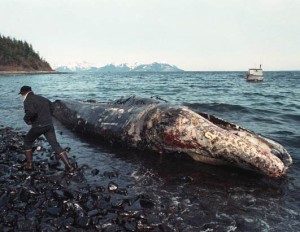
What is the real cost of oil?
As the average price of gasoline approached $4.00 per gallon in the U.S., and as energy related disasters unfolded around the world, I began to consider the true cost of energy. There is the price posted at the pump, and in our electric bill each month. And then there is the true cost of energy. What was the cost of BP’s Deepwater Horizon oil spill in the gulf? Or the reactor meltdowns at Fukushima Daiichi in Japan? We may never know. Talk about hidden costs. Coal fired plants produce half the nations electricity. It’s estimated that these same plants cause health related costs of $100 billion per year. A 2010 report from the Clean Air Task Force, The Toll From Coal found that, in the United States, particle pollution from existing coal power plants (caused some) 13,200 premature deaths in 2010, as well as 9,700 additional hospitalizations and some 20,000 heart attacks.
And then there is the cost of war. Can anyone really argue that our wars in the middle east are not to protect energy resources this country cannot do without. It’s offically called the war on terror, but Osama Bin Laden’s stated reason for abandoning Saudi Arabia and attacking the United States was the presence of U.S. infidels and air bases in Saudi Arabia, homeland to Mecca, the birthplace of Muhammad, founder of the Muslim religion. Why are we in Saudi Arabia? Iraq? Afghanistan? What is the turmoil all about? At the core of it all is just one thing. Energy in the form of oil reserves. And our presence in that region is to promote institutional stability so that oil can continue to flow to the United States and the rest of the world. For if that supply of oil was suddenly shut off the collapse of the world economy would follow shortly. And we thought the sub prime mortgage crisis was a problem.
So what is the cost of the war on terrorism, which, in fact, is largely a war on fanatics who believe that the U.S. should have no presence in the oil rich Muslim Holy Lands. Most sources seem to agree that the cost of the war on terror for the U.S. will be between $2 and $4 trillion dollars. That amounts to approximately $20-40,000 for each U.S. citizen. The U.S. consumes around 20,000,000 barrels of oil per day. That’s about 7.3 billion barrels a year, the cost being at around $100 per barrel or $730,000,000 of oil per annum. So each year our presence in the middle east adds hundreds of billions of dollars to the cost of oil.
And then, sadly, add to the cost of war the value of the dead and wounded. Estimates of war related deaths in Iraq vary widely from about 100,000 to more than 1,000,000. More than 5000 Americans have been killed in Iraq, and more than 30,000 wounded. How can we possibly estimate these costs?
So the true cost of oil = what we pay at pump + environmental consequences including global warming + cost of wars + cost of energy related disasters + loss of life or quality of life.
I recently read an article about the decline in popularity of CFL lightbulbs, which are three times more energy efficient with lifespans 5 to 10 times that of incandescent bulbs. I wondered why that was? Yes, CFLs cost more and there are other issues. But if you do the math, they save homeowners money and they are good for the environment because they require less energy. You would think they would be flying off the shelf. I think if people realized the true cost of the energy that was being wasted, CFLs might be more popular. For it’s clear that the cost of energy is far higher than our energy bills reflect. You may think you’re putting $4 gas into your car, but the real cost is much higher. In dollars, destruction, and death. Let’s be honest. An energy model that is carbon based clearly needs to be evaluated in terms of true cost and then compared to alternatives such as wind, solar, and even nuclear. What if instead of going to war in the middle east we put $2-4 trillion into alternative energy sources that were much more reliable than what the middle east has to offer. But we chose to spend our money on war rather then invest it in the future. Eventually carbon based energy will become too costly to be viable. But in the mean time, we owe it to ourselves, our planet, and the children of the future to invest in better technologies, to conserve where and when we can, and to make conscious decisions when it comes to choosing our source of energy.
 Many home improvement companies will recommend a whole host of energy efficient options that should be performed on your home, and usually their advice coincides beautifully with the services that they offer.
Many home improvement companies will recommend a whole host of energy efficient options that should be performed on your home, and usually their advice coincides beautifully with the services that they offer.
















